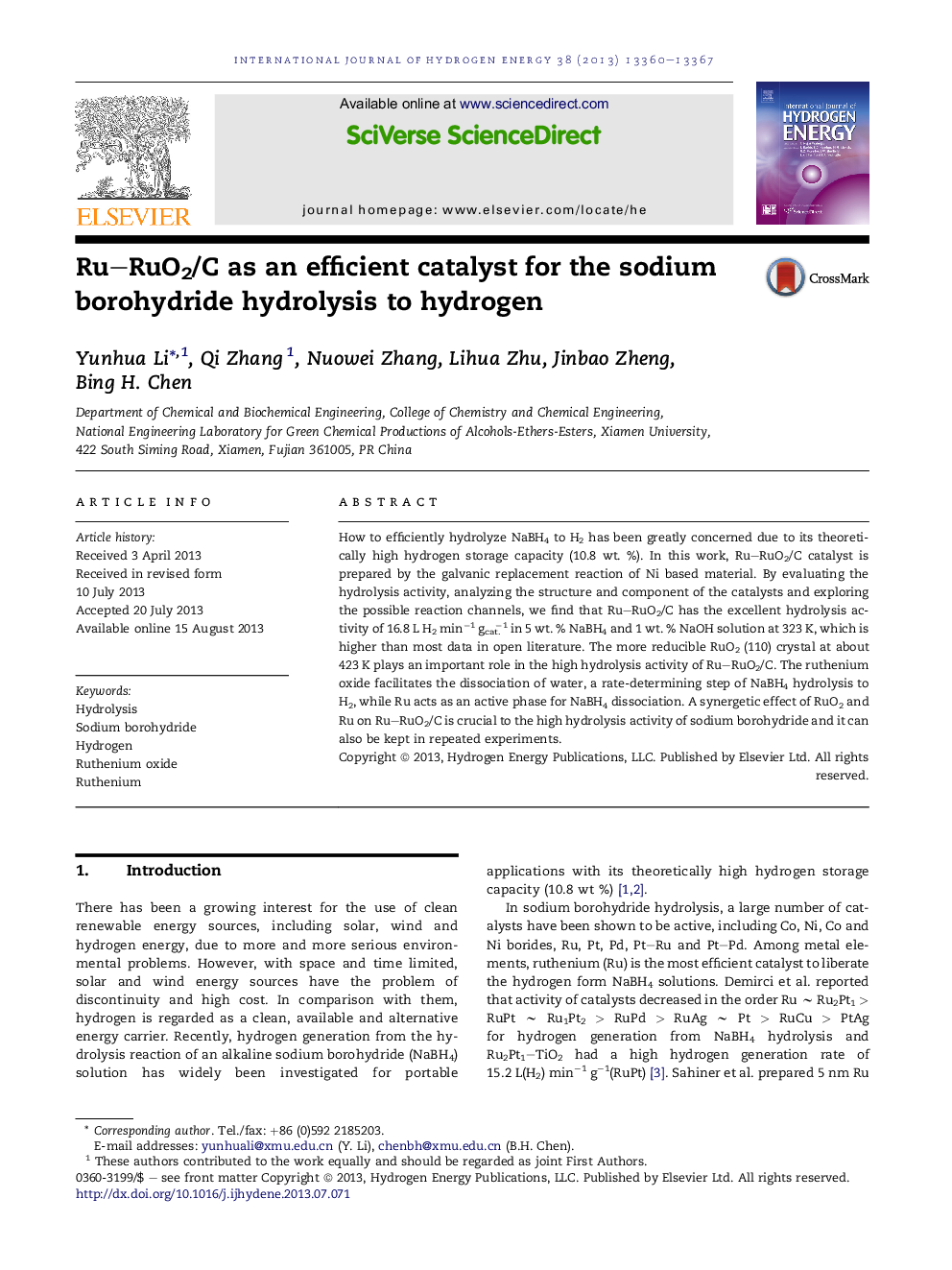| Article ID | Journal | Published Year | Pages | File Type |
|---|---|---|---|---|
| 1273342 | International Journal of Hydrogen Energy | 2013 | 8 Pages |
•Ru–RuO2/C shows an excellent hydrogen generation rate of 16.8 L H2 min−1 gcat.−1.•Reducible RuO2(110) crystal plays important roles in NaBH4 hydrolysis reaction.•A synergetic effect of RuO2 and Ru results in high hydrolysis activity of NaBH4.
How to efficiently hydrolyze NaBH4 to H2 has been greatly concerned due to its theoretically high hydrogen storage capacity (10.8 wt. %). In this work, Ru–RuO2/C catalyst is prepared by the galvanic replacement reaction of Ni based material. By evaluating the hydrolysis activity, analyzing the structure and component of the catalysts and exploring the possible reaction channels, we find that Ru–RuO2/C has the excellent hydrolysis activity of 16.8 L H2 min−1 gcat.−1 in 5 wt. % NaBH4 and 1 wt. % NaOH solution at 323 K, which is higher than most data in open literature. The more reducible RuO2 (110) crystal at about 423 K plays an important role in the high hydrolysis activity of Ru–RuO2/C. The ruthenium oxide facilitates the dissociation of water, a rate-determining step of NaBH4 hydrolysis to H2, while Ru acts as an active phase for NaBH4 dissociation. A synergetic effect of RuO2 and Ru on Ru–RuO2/C is crucial to the high hydrolysis activity of sodium borohydride and it can also be kept in repeated experiments.
